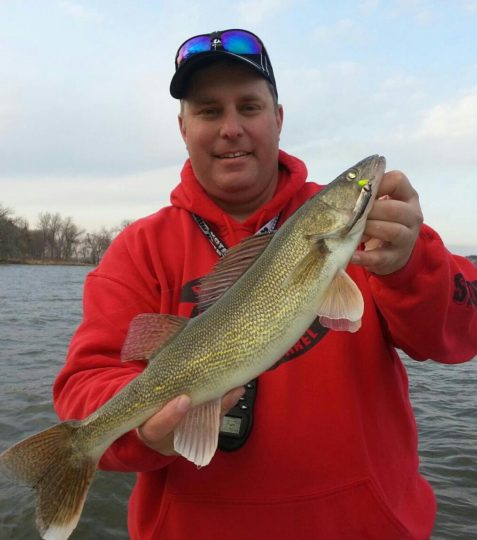
The fall months have reputations for being some of the best months of the entire year for fishing as most fish species, walleyes included, are actively feeding during this time. While big, deep lakes are often thought of as “classic” walleye waters, small, shallow lakes often harbor good walleye populations that often go on the bite now too.
Typically, I like to target fall walleyes in shallow, weedy lakes by searching along the lake’s first drop-off, that area where the flat that typically extends out from shore starts to drop to deeper depths. On many of the small, shallow lakes I fish this drop-off occurs in depths from 5- to 10-feet deep.
Searching along subtle points and turns or finding bottom content changes along these drop-offs is often a good starting point. These areas are often good spots during the spring bite on these lakes and produce again during fall. As fall progresses, I start looking for still living, green weeds which often occur grow up on the flat and then extend down the drop off as well. In fact, an area of green weeds will often be the “spot on the spot” where numbers of walleyes of all sizes gather.
Incidentally, the areas where “good weeds” are present one fall, are often areas that will harbor weeds and fish in future falls as well. These areas are also often top winter ice fishing spots too, particularly during early ice.
The classic jig and minnow combination slowly trolled or drifted along a lake’s first drop-off is one way to find the subtle differences and/or living weeds that may host fall walleyes in good numbers. Simply drifting with the wind and swimming a light jig and minnow combination on a long line behind the boat is, in fact, my favorite fishing method on these waters because it helps me eliminate unproductive water and find walleye schools.
Once a school of marble-eyed fish is found along the drop-off, the catch can often be maximized by anchoring, either with an anchor or with a trolling motor’s “spot-lock” feature and pitching jigs and minnows repeatedly to the fish. Shallow water pitching is a great way to work over a spot and catch a bunch of fish from a small area.
Jigs in the 1/16- and 1/8-ounce size range get the nod when drifting or pitching to shallow walleyes. The classic Fire-Ball Jig is available in these sizes and comes in a bunch of “fishy” colors as well. Various minnows will produce fall walleyes, but a scoop of fatheads is often all that is needed. On flat calm days or in very shallow water, the 1/16-ounce size Fire-Ball® gets the nod, though I’ll go to the 1/8-ounce size if the wind kicks up. Incidentally, the Fire-Ball® will soon be available in several UV color patterns that will make these jigs even more appealing to fish in the off-colored waters often found in many small, shallow lakes.
Light jigs and minnows fish well on light line and spinning rods and reels. A quality spinning reel loaded with 6-pound test line and fished on a medium-light rod in the 6 ½-foot size range works well whether trolling/drifting or pitching. CX Premium line works great when fishing light jigs as it’s a low memory, fluorocarbon-coated line that handles very well on spinning reels. The new Lew’s Custom Speed Spin reel features 10-ball bearings, is buttery smooth, and is perfect for light jig fishing.
If you are looking for some perfect fall fishing fun this year, consider heading to a small, shallow lake right now. Tie on a jig and minnow and look for the spots just described and you just might land on walleye gold yet this season!
Good luck with your fall fishing and, as always, remember to include a youngster in your next outdoors adventure!
Mike Frisch is a western Minnesota fishing guide and co-host of the popular Fishing the Midwest TV series. Visit www.fishingthemidwest.com or follow Fishing the Midwest on Facebook for more “fishy” stuff.
Photo – Here’s s big spring walleye caught by pitching a Fire-Ball Jig to shallow water. Jigs and minnows fished in the shallows produce big walleyes in fall too!

